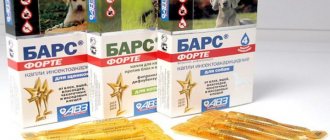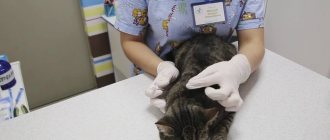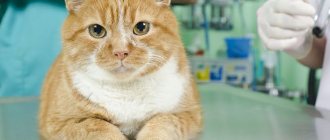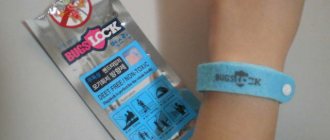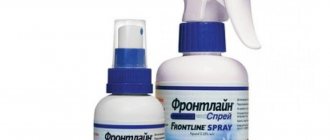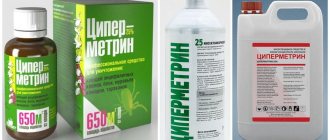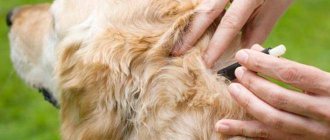Benefits of flea drops
As mentioned earlier, many people use the drip form of flea medications. At the same time, the following advantages stand out during the operation of the solution:
- Easy to apply - on the skin in the area of the shoulder blades and the back of the head;
- With the right choice - safety of use;
- The duration of the effect is from 1 to 3 months, depending on the animal and its living conditions;
- The ability not only to eliminate fleas, but also to prevent their new establishment for the duration of the composition;
- Large selection among manufacturers.
Naturally, it is important to select a product in accordance with the parameters of a particular animal. Breed or gender does not play a role here. It is important to buy a product in accordance with the age of the cat, as well as its weight. After all, an ordinary yard cat will weigh 3-5 kg, and a Maine Coon will weigh up to 17 kg. Therefore, this point should be clarified. Otherwise, an incorrect dosage will not bring benefit or even harm the pet.
Possible side effects and selection criteria
Treating cats against various ectoparasites and endoparasites should be carried out regularly, regardless of the season of their activity. Treatment during the period from spring to autumn deserves special attention, since it is during this period that the peak activity of ixodid ticks and other bloodsuckers falls.
A veterinarian will help you choose the right drug, based on the characteristics of the animal, breed, lifestyle and age. The pharmacological veterinary market offers a whole range of antiparasitic agents to combat ticks and fleas. Preference is given to drops, since they are easy to apply, have a low number of side effects, but are also effective.
It is important to understand that the duration of exposure to the selected insectoacaricide depends not only on the manufacturer, but also on factors such as washing the animal. The effect of the antiparasitic drug lasts from 2 weeks (with frequent washing of the animal) to 2 months. If the owner often washes the cat with shampoo, then antiparasitic treatment will need to be carried out during the peak of mite activity every month.
When selecting a drug, the age and weight of the animal, as well as the tendency to have allergic reactions, are taken into account. Drops against ticks from leading manufacturers of antiparasitic agents have low toxicity, but in case of individual intolerance to certain components they can provoke the development of an allergic type reaction. As a rule, this is a local reaction in the form of itching and redness at the site of application.
If a specific reaction occurs, it is strongly recommended to contact a veterinarian, having a bottle of antiparasitic drops with you.
An important criterion is the correct application of the product. The drops should be carefully applied only to the animal’s withers, on clean and dry skin. For pregnant cats, lactating or in the stage of exhaustion (if the immune system is disrupted), drugs are selected individually. Preference is given to products with herbal ingredients or substances with low concentrations of toxic substances.
At your own discretion, in order to avoid the development of side effects, it is prohibited to change the dosage. The same applies to deliberately underestimating the dosage - the drug simply will not work, and the animal will be at risk of being attacked by ticks with further development of complications.
Among the side effects observed extremely rarely with individual hypersensitivity to the components of the insectoacaricidal agent are the following:
- increased secretion of salivary secretions;
- tearfulness;
- muscle tremors;
- the appearance of irritation on the skin;
- eruption of gastric contents.
The appearance of one of the above symptoms is a reason to immediately contact a veterinarian, after washing the animal under running warm water and soap.
Which substances can be used and which cannot?
Naturally, the drops contain compositions based on disinfectant components. Some of them are safe for cats, and some can even kill your pet. Safe ones include:
- Imidacporil;
- Finpronil;
- Silamectin.
But permethrin can cause mass poisoning, even if the animal is protected from licking the composition from its fur. It penetrates the systemic bloodstream and can cause serious disruptions in the functioning of internal organs. In particularly severe cases of intoxication, the animal may die.
How to choose
The selection of a quality product depends on the physical characteristics of the pet, the chemical characteristics of the active ingredients, and the presence of allergic reactions. Main steps:
- veterinarian consultation;
- choose the type of product (drops, collar, tablets);
- quantity, effect of components (additionally against ticks, helminths);
- determine the dose (depending on age, weight);
- study the manufacturer’s information (features of administration, side effects);
- duration of protection, effectiveness;
- quality certificate.
During treatment and prevention, it is necessary to simultaneously treat rooms, bedding, sleeping places, and kennels.
Additional preventive protection - folk remedies: bathing with tar soap, essential oils and decoctions (cloves, tansy, orange, wormwood, rosemary).
TOP 5 best flea drops for cats
If we consider the positive effect of the composition, then it is achieved in most cases. But if we consider difficult situations, when the animal has suffered greatly from parasites or has other types of problems, then we distinguish:
- Advantage. Consists of imidacloprid. Available commercially and can even be used on kittens. Effective against fleas and ticks, but only for 1 month.
- Stronghold. Based on silamectin. It can be used from the age of 6 weeks. This composition helps against both external and internal parasites. valid for about 1 month.
- Frontline. Contains finpronil. This remedy can be used from 8 weeks of age. Its validity period is 2 months.
- Inspector Total K is represented by the composition fipronil and moxidectin. These drugs provide a lasting effect of up to 2 months, as well as rapid elimination of parasitic insects. Used in cats 1-4 kg from 8 weeks of age. Helps eliminate worm eggs on wool, mites, and blood-sucking insects. These drops are odorless and have no side effects on the animal.
- RolfСlub 3D. The drug is based on pyriproxyfen, fipronil, etofenprox. It is used in animals up to 4 kg, and can be used from 12 weeks of age. Effective against fleas, ticks, lice and flying insects. Valid for about a month.
These drugs are effective if used according to the instructions. Their composition is safe for relatively healthy animals.
Expert opinion
Danilova Maria Alekseevna
Therapist, dentist, ophthalmologist, surgeon, express tests, ratologist, groomer.
It is important to understand that in seriously ill animals, remedies of this kind are used only as a last resort. The same applies to the use of anthelmintics and flea drops.
Frontline
This product is available in tubes of various dosages. The use of this drug is approved for animals of different ages, both kittens and adult cats. However, it is not recommended for use on sick and weakened animals. The use of Frontline drops is effective in the fight against fleas, worms, and ear mites. When applied, the coat color of some animals may change, so it is not advisable to use it before an exhibition.
When choosing a product for your pet and before using it, you need to study what the instructions guarantee and how the drug will work. You can also study reviews from people who have already assessed the effect of specific drops on their pet. But first, you should still visit the veterinarian and show him your pet. The specialist will make an appointment and select the most suitable treatment for the animal.
Many cat owners leave grateful and positive reviews about medications that help rid their animals of parasites. There are thousands of them on the Internet, and people not only write words of gratitude, but also attach photos of their healthy and happy pets.
Rules for applying drops to a cat
In order for the composition to act as effectively as possible, it is important to follow the rules of application. The process itself is quite simple. It is necessary to secure the animal so that it does not twitch during the process. After this, the fur on the neck and between the shoulder blades is pulled apart. The composition drips onto the skin. Ideally, it is better to hold the animal in your hands for a while and calm it down. Next, the process lies in the details:
- If you plan to wash the animal before the effect of the composition expires, you need to stop using it before bathing or carry out the hygiene procedure earlier.
- If the cat has a very thick undercoat and it is very difficult to reach the skin, some owners trim an inconspicuous area of fur with the utmost care. This will make processing much easier.
- If the animal was bathed with flea shampoo or treated with another composition, then it is necessary to maintain the time between medications. The duration of the break depends on the specific form of insecticide.
- In addition to the animal, its bed, the place where it lives, and toys should be treated with flea products. Afterwards, objects and surfaces are thoroughly washed or washed.
- If additional exposure is required, you should consult a veterinarian, as too frequent use of insecticides can lead to poisoning of the cat.
- After applying the product, it is important to ensure that the animal does not shake itself off for some time and does not try to paw into the treatment area. The latter is dangerous in the context of licking.
- If it is not possible to prevent licking, then you should put protective material in the form of a blanket or collar on the cat.
The composition is considered safe immediately after drying. But in no case can you “adjust” the absorption process with the same hairdryer. It pays to be patient here.
Video “How to give a cat anti-flea medication?”
In the video you can see how to apply flea treatment correctly and where.
Was this article helpful?
Thank you for your opinion!
The article was useful. Please share the information with your friends.
Yes
No
X
Please write what is wrong and leave recommendations on the article
Cancel reply
Rate the benefit of the article: Rate the author ( 4 votes, average: 3.75 out of 5)
Discuss the article:
General rules of use
Typically, drops against fleas and ticks are applied to the animal's skin at the withers. To do this, you need to carefully move the fur apart and apply the dose of the drug indicated in the instructions. For better effect, the product can be rubbed into the skin. After this procedure, the kitten cannot be combed or washed for 2-3 days.
Sometimes manufacturers recommend applying droplets not only to the withers, but also along the spine. This is done in exactly the same way as in the first case. Each drug has its own dosage, so be sure to read the instructions before applying the product. It also describes in detail the number of flea drops.
Sometimes your veterinarian may recommend using a spray instead of drops. In this case, the drug must be applied differently. For example, Fipronil spray must be sprayed onto the entire skin of the animal.
Typically, flea and tick drops are applied to the animal's skin at the withers.
It is important to note that if a cat or kitten lives outside, you need to make sure that the animals do not get wet after the procedure. If after applying the drug the animal gets caught in the rain, it makes sense to repeat the disinfection. Although most drops are not very toxic, care must be taken not to get the product on the animal's nose, mouth or eyes. Otherwise, the mucous membrane should be rinsed with plenty of water.
You also need to know that not all drops can be used for a kitten. Sometimes the manufacturer prescribes a different dosage for small pets. Otherwise, you need to buy special flea drops for kittens. Therefore, before purchasing such drugs, you must inform the seller of the age of the animal.
What substances are used in flea treatments?
To combat insects, products based on organic or synthesized insecticides are used. The task of these substances is to destroy the parasite, which they successfully do by acting at the cellular level. Despite the fact that most insecticides are quite toxic, in the quantities in which they are applied to the skin of an animal, they are safe for pets.
The most common insecticides that act as active ingredients in preparations:
- Permethrin. An insecticide and acaricide belonging to the group of pyrethrins - natural toxins contained in the flowers of plants of the aster family. It is a neurotoxic poison, disrupts the ion permeability of sodium channels and inhibits the process of polarization of the membrane of nerve cells.
- Pyriproxyfen. Analogue of insect growth hormone. Blocks embryogenesis, metamorphosis and reproduction of sexually mature individuals. Under the influence of the drug, the larvae die, and the adults become sterile.
- Fipronil. Insecticide from the phenylpyrazoles group. In the insect's body, it binds to chloride channels and blocks GABA receptors. This leads to hyperexcitation, paralysis and death of the parasite.
How do medications in the form of drops work?
The active substances included in the drops against fleas and ticks begin to work immediately after contact with the animal’s skin. Regardless of whether the liquid is distributed over the skin, accumulating in the upper layers of the epidermis and sebaceous glands, or absorbed into the blood, it has a toxic effect on insects, resulting in:
- blocking the transmission of nerve impulses;
- respiratory dysfunction;
- loss of ability to move, spasms, paralysis;
- disruption of the process of reproduction and maturation of larvae.
The effect on parasites does not depend on how they were exposed to the insectoacaricide - by contact with the skin or at the time of the bite.
A little theory - what do you need to know about drops?
Flea drops for cats are a concentrated solution of insecticides, characterized by rapid action and low toxic properties for animals.
The most common substances used in drops:
- Invermectin is a strong insecticide that has universal properties: it destroys not only fleas, but also other parasites. Effective against lice eaters and ticks. It is very toxic, so if it is present in drops, be sure to follow the dosage exactly!
- Permethrin is an insecticide that has been proven over the years and is relatively safe for warm-blooded animals (even if it gets into the stomach, it breaks down and does not poison the animal).
- Pyriproxyfen - this substance has previously proven itself to be the main component of the “impregnation” in flea collars. Today the component is more often used as a base for drops.
- Fipronil is a modern insecticide, effective and safe for cats, it acts quickly and minimizes re-infection of the animal. Some insecticides not only penetrate the skin and make the cat's blood "poisoned" for fleas, they also have a strong, unpleasant odor that repels parasites. So it is possible to apply anti-flea drops for cats precisely - at the very base of the skull and fleas will begin to leave the animal literally in the first minutes after treatment.
Remember, the drops have an aroma that your pet may not like, so rub the drops in thoroughly (if indicated in the instructions) so that the cat cannot remove them mechanically.
Advantages and disadvantages of using drops as protection against ticks
Drops are one of the most popular tick repellents for cats. The choice of this particular form of medication is due to its advantages:
- the ability to destroy different types of ticks;
- moderate level of toxicity, that is, relative safety for cats and people;
- high efficiency;
- Ease of use;
- long-lasting action, avoiding frequent treatments;
- extremely rare occurrence of side effects when used correctly and in compliance with the dosage.
The disadvantages of anti-tick drops for cats include:
- toxicity to other animals;
- the likelihood of an allergic reaction to one of the components;
- restrictions for use in small kittens, pregnant and lactating cats, weak and sick animals.
Also, the disadvantages include the possibility that with frequent use of one drug, ticks will develop resistance, and the treatment will not give the desired result.
Feedback from cat owners
Cat owners speak positively about the effects of the described drugs. Isolated negative responses are explained by individual intolerance to the components of the insecticide or violation of storage rules: flea drops cannot be frozen or stored for a long time at outside temperatures above 30 °C.
Here are examples of reviews:
- Frontline for cats. We have used this product for several years and it has always worked well for our cats. We firmly believe that this has kept them free of pests and problems. This product is made in France, which surprised us. Buy with confidence!
- I have been ordering Frontline for my cats for the past few years. In summer they spend most of their time outdoors. We've never had a problem with fleas or ticks, but we start treating them in early spring and do it faithfully all summer long. I work at a veterinary clinic and some people who use frontline complain that it doesn't work. I think it's harder to control fleas if you wait until they have them and your home is infested. I think it works well when you start in the spring and use it until there is a hard freeze. For those who live where it doesn't freeze, it's probably best to use it year-round. I will buy this product again next spring when it warms up here. We have 4 cats and I use Frontline Plus for all of them.
- After years of treating cats with Frontline and having the fleas return before the next dose was due, I discovered Vectra. Everything about this product is great. The cap is easily pressed to reveal the dose, and then it parts the hair to release the product onto the skin. And speaking of effectiveness, I didn't see any active fleas within an hour! Let's sing the praises of this product!
- Vectra. It works better than Advantage or Frontline. It doesn't seem to make cats feel sick the way Advantage does. Sometimes cats get sick from Advantage. My cats would lie around for 2 days. Whereas with Vectra, cats don't seem to have any adverse reactions. I highly recommend Vectra. It works as it should and kills fleas quickly.
Be sure to read:
Prazicide - suspension for kittens: instructions for use, reviews from veterinarians
Benefits of medicines in the form of drops
As spring approaches, many owners of purring creatures begin to worry about the question of how to protect their cat from ticks in the country. Veterinarians recommend using medications in the form of drops to treat cats. These medications are used not only for preventive purposes, but also for the treatment of ear mites. They are also effective in combating other types of mites that can parasitize areas of the scalp or body of a pet.
Antiparasitic drugs in the form of drops have the following advantages:
- A fairly large assortment of drugs of this form allows you to choose the most suitable drug in terms of price and quality.
- Most antiparasitic agents produced in the form of drops have a wide spectrum of action.
- They have a detrimental effect on parasites at any stage of their development. Drops protect your pet from ticks and other parasites (fleas, lice) for 30 days.
- These medications are considered relatively safe. They can be used not only for treating pregnant and lactating cats, but even for kittens that have reached 2 months of age.
- Quick achievement of results (the composition begins to act a few minutes after application).
- Medicines have a minimum number of side effects and contraindications.
- A convenient plastic pipette makes it easy to apply the drug to the withers and accurately dose the required amount of solution when instilled into the ears.
Advantages and disadvantages
Insecticidal components are not absorbed into the blood, but remain in the sebaceous glands and hair follicles. Upon contact with a toxic substance, paralysis occurs and the insect dies within 10-15 minutes. The drops are irrigated onto the intact, dry skin of the withers, from where the pet cannot lick them off.
Flaws:
- The liquid is also toxic to warm-blooded animals if it gets into the eyes or mucous membranes. The cat develops drooling, conjunctivitis, and vomiting.
- You cannot treat several pets at once: they will lick the liquid from each other’s withers, become poisoned and be left without protection from attacks by fleas and ticks.
- A nursing cat must be removed from the babies until the drops are absorbed. Most drugs remain toxic even after absorption.
- After treatment, you need to protect the cat from getting wet. Children should not be allowed to pet the pet due to the risk of developing an allergic reaction.
- The best drugs are expensive.
The advantages of insecticidal drops outweigh the disadvantages.
In what cases do veterinarians recommend using drip medications?
Applying drops to the withers against fleas for cats is practiced everywhere in veterinary medicine. Thanks to this form of the insecticide, it almost completely penetrates the skin. For example, a stream of spray is sprayed several centimeters around. In addition, it ends up on those parts of the animal’s body that it can lick. Therefore, veterinarians recommend using drops to treat young cats and kittens that are unable to remain still for even a few minutes.
Interesting! These medications are well suited for both short-haired and long-haired pets. The insecticide does not wet the hairs, but is absorbed directly into the skin. Since fleas feed on the animal’s blood, they will certainly be immobilized within 24 hours.
| Characteristics of anti-flea drops for cats | |
| Advantages | Flaws |
| Ease of use | Temporary wool contamination |
| Rapid manifestation of effects | The presence of a pungent odor (for some insecticides) |
| Relatively low price | — |
| Low toxicity, high safety | — |
Nuances and rules for safe application of the drug
The owner must protect not only the cat, but also himself from the negative effects of the insecticidal drug. Processing must be carried out with thin gloves. If you are prone to developing allergic reactions, you need to wear a medical mask and then throw it away. To increase the effectiveness of the treatment procedure, you should use the following tips:
- Before treating a large animal, you should contact your veterinarian to calculate the dose of the drug.
- You need to use a pipette, which is equipped with a flat plastic bottle, to evenly distribute the product on the skin. It is also very convenient for counting drops when treating kittens.
- After the procedure, you should not bathe the animal for three to four days.
Larger cats are given a larger amount of solution, distributing it throughout the spine. After the procedure, they immediately have a desire to lick the drops, which can lead to intoxication. It is advisable to place your pet in a carrier for a couple of hours and wait until the insecticide is absorbed.
Attention! Situations when a cat is frightened by the owner’s manipulations, breaks out and hides are not uncommon. You shouldn’t catch it and try to complete the procedure. Application of the remaining drug can be continued after the animal has calmed down.
